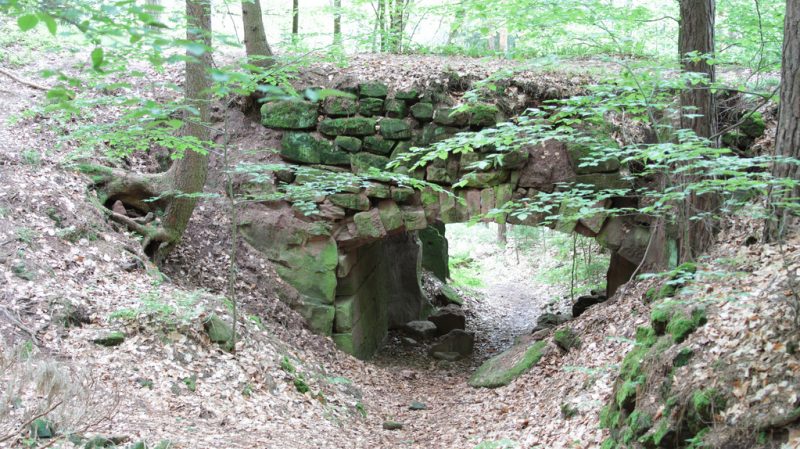The hunt is on for looted WW2 treasure in a German forest. After a disappointing result from the recent ‘Nazi Gold Train’ dig in Poland, this new hunt is for lost gold and precious jewels, and most precious of all, the missing Amber Room of the Czars.
Amateur detective Klaus Fritzsche, aged 80, is using Third Reich documents and old aerial photographs to locate sub-surface tunnels at the old Reimahg-A Aircraft factory which churned out war machinery demanded by Hitler.
As the search for the legendary ‘Gold Train’ of the Nazis in Poland evaporates, attention has changed to woodland in the eastern German state of Thuringia at Walpersberg.
The old plant made engine parts for the Messerschmitt ME 262 fighter jet.
In the spring of 1944, the Nazis constructed a large string of underground tunnels and bunkers at the location to safeguard production lines from aerial bombings by the Allies.
Called the Reimahg plant in honour of Reichsmarschall Hermann Göring, it never achieved full production because the war was nearing its end and the Nazi regime was dying.
Tunnel entrances are closed because they are a hazard to the public. Historian Marc Bartuschka, who wrote a thesis about the complex, said that East German communists initiated their own investigations in the complex for supposed treasure, but didn’t discover anything of importance.
However, Mr. Fritzsche assumes they were studying the wrong place. He believes boxes of booty – including the dismantled Amber Room – were situated in galleries that were sealed like the tombs of pharaohs after being dynamited. And he presumes that the Amber Room may be included among the treasures lying under the forest.
Crafted completely out of amber, precious stones, and gold, the Amber Room was a classic work of baroque art and widely considered as the world’s foremost art treasure. It was presented by the King of Prussia in 1716 to Peter the Great.
Eventually, Catherine the Great employed a new generation of artisans to adorn the room and relocated it to her new summer abode in Tsarskoye Selo, outside the city from the Winter Palace in St Petersburg.
But it was stolen by the Nazis during the 1941 attack on the Soviet Union and its location has been a mystery since the closing days of World War II.
Following the war, the Amber Room became prominent as central Europe’s El Dorado, a quest that captured both the poor and wealthy.
Maigret author Georges Simenon established the Amber Room Club to finally locate it. Everyone had various theories of what might have happened to the work.
The Amber Room was transferred by the Germans to Königsberg, East Prussia’s capital, which is now the Russian territory of Kaliningrad. The conventional belief is that it was ruined by Russian artillery fire when the Red Army in 1945 attacked the city, Mail Online reported.
However, there are people who maintain it was taken away before Konigsberg’s fall. Mr. Fritzsche has a small group of volunteers assisting him with the weighty equipment to start digging in the Nazi maze.
The former engineer and contractor have permission from the local officials to investigate.
Previous attempts to find underground caverns overflowing with looted Nazi treasure didn’t succeed earlier in the year. This time, he will drill straight down at a location where, he claims, concealed Nazi documents will point him in the right direction.
He says he has gathered proof that the SS moved many crates to the site in the waning days of the war before they sealed them in the passages.
If it is there, they will locate it, he promised.
